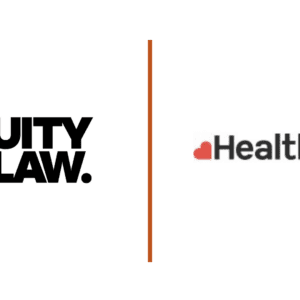Unlocking The CQC’s Quality Statements – How And Why “Co-Production” Must Become A Cornerstone Of Your Service
Author: Jenny Wilde
Key Contact: Jenny Wilde
Anyone that has studied or reflected upon the CQC’s new Quality Statements will have noticed a number of recurrent themes. These can act as guides as to how the CQC will approach regulation going forwards and clues can be determined on how a provider can best prepare for inspection under the new regime.
At Acuity Law, we have noted one significant strand running through the Quality Statements and that is the real emphasis on how providers work with other stakeholders and agencies involved in care. This is more widely known as the concept of “co-production”.
Co-production is not a new model. It has been used by the NHS for many years to develop public services and can be defined as a way of working that involves people who use health and care services, carers and professionals in equal partnership; and which engages groups of people at the earliest stages of service design, development and evaluation.
If applied successfully, the outcome of co-production should be that people who use services and carers are involved in all aspects of a service – the planning, development and actual delivery. Social care professionals, people who use services and carers should work in equal partnership towards shared goals.
The main benefits of co-production are:
- Empowering service users
- Enhancing accountability and transparency
- Driving innovation and best practice
- Promoting equality and inclusivity
- Strengthening relationships and partnerships
This notion may have unconsciously underpinned the delivery of social care services historically, but the CQC is now crystallising it in the way that it inspects services. It is clear that, from now on, the CQC wants to see evidence of these collaborations and how these parties are considered and heard.
The ever-present need for person-centred care supports the fundamental principle of co-production i.e. that people who use services, carers and staff are assets and are valued.
For the first time, the CQC has brought into specific consideration how providers treat their workforce.
A Quality Statement under the key question of “Caring” reads:
“Workforce wellbeing and enablement – ‘We care about and promote the wellbeing of our staff, and we support and enable them to always deliver person centred care’”.
What the Quality Statement appears to enshrine is the need to support and develop staff in such a way that they are eager to deliver the best care possible and that they have a say in how care can be person-centred. This will force providers to reflect on their internal benefits schemes and how they aid retention. It also makes providers consider what mechanisms are in place to ensure that staff are listened to, that they are kept safe and that they have available to them opportunities for career development.
Other Quality Statements capturing the importance of co-production include:
Under Well-Led:
Partnerships and communities
We understand our duty to collaborate and work in partnership, so our services work seamlessly for people. We share information and learning with partners and collaborate for improvement.
Under Well-Led:
Shared direction and culture
We have a shared vision, strategy and culture. This is based on transparency, equity, equality and human rights, diversity and inclusion, engagement, and understanding challenges and the needs of people and our communities in order to meet these.
Under Safe:
Safe systems, pathways and transitions
We work with people and our partners to establish and maintain safe systems of care, in which safety is managed, monitored and assured. We ensure continuity of care, including when people move between different services.
The CQC has made its intention clear – it wants to see how providers are involving parties at all levels. This means that providers have to consider what evidence best captures how they are meeting the Quality Statements in question.
Surveys and mechanisms for feedback have always been crucial but now their relevance seems even stronger. Questionnaires for both service user and staff groups, complete with “you said / we did” conclusions are an excellent start.
It can be hard to demonstrate co-working between other healthcare professionals and stakeholders (including the local authorities) but comprehensive records on visits, appointments and general communications will prove to be very important. As will the recording of any outcomes and next steps that arise out of those contacts.
Nothing about the law has changed as part of the shift within CQC but the approach and intention of inspection has altered. Modern care planning and delivery is collaborative and dynamic and the CQC wants to see how people’s needs are being met by every facet of the system. It seems that it is the care provider’s responsibility to be the umbrella under all stakeholders operate.
The truth is, most providers are co-producing and have been doing so for years. However, the CQC’s focus is now on demonstrating how you are collaborating and what positive effect this is having on the people in your care.






